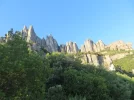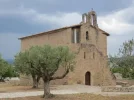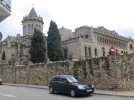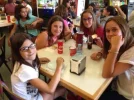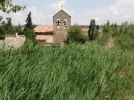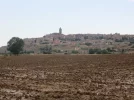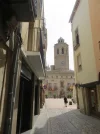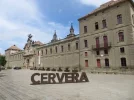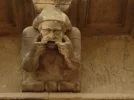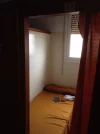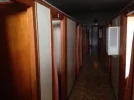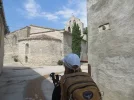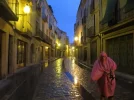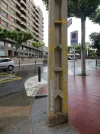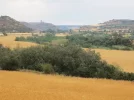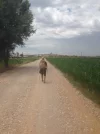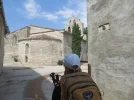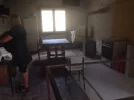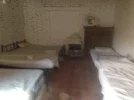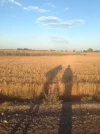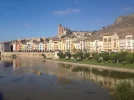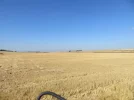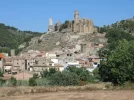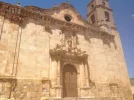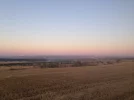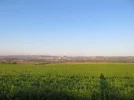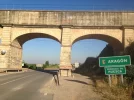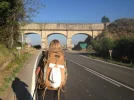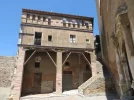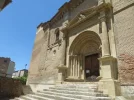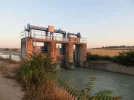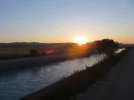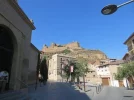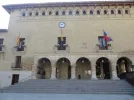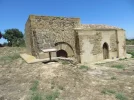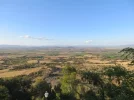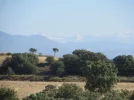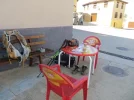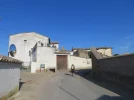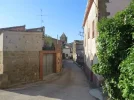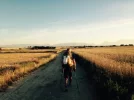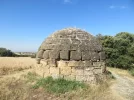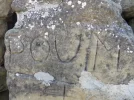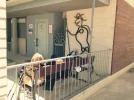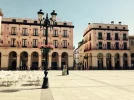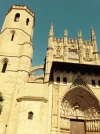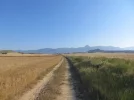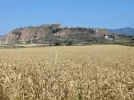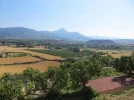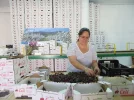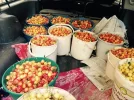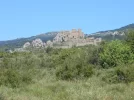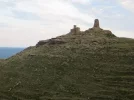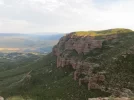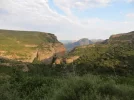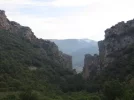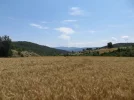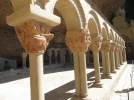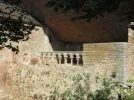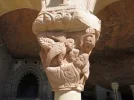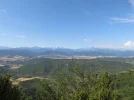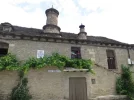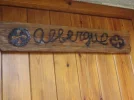I have finished my description of the first 9 days of my Camino 2015, which you can find here: https://www.caminodesantiago.me/community/threads/my-cami-st-jaume-from-llançà-to-montserrat.36051/ I started at Llanca, north of Barcelona, on the coast and almost at the French border. The walk from Llanca to Montserrat is 5*****, absolutely wonderful.
I know that many people start their Camino in Montserrat (as the guide books often do, too), so I thought I'd separate the parts. And besides, Montserrat was not only the beginning of a new Camino, but the place where LTfit and I joined up and started walking together. I'm hoping she will add comments, too. Especially about the two days she took from Barcelona to Montserrat, which were really really tough. And if LT says something is really really tough, for most of us mere mortals it is going to be nearly impossible!
Anyway, however you get to Montserrat, you are likely to be overwhelmed by the huge crowds, the high level of commercialization and the lack of peace and serenity. BUT... just wait a while. By 8 or 9 pm, the restaurants close, the crowds are gone, and you can contemplate the majesty of this amazing setting.
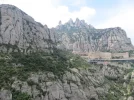
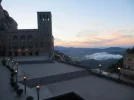
LT showed up soon after my busload of Cervera friends had left. We had never met in person, just on the forum. I have to say, I highly recommend the forum as a way to meet new friends. Without LT, my Camino Catalán would just not have been as fun, as filling, as interesting, etc, etc. True, you may have to adjust your walking a bit if you plan to stick together. LT is a faster walker than I, so we walked together for the first week or so, and then decided that each one would go at her own speed, and we would meet up at designated resting points (usually involving a bar or café). That still requires some accommodation, because of course it meant LT had a whole lot longer to rest than I did and I'm sure that on many occasions she was already itching to go by the time I got my boots off for a rest, since she had already been there for a half hour. So I was the lowest common denominator, and my speed wound up determining when we would arrive. I felt kind of guilty about that sometimes, but LT was flexible and un-bothered. It just meant that sometimes she got a head start on her favorite post-Camino refreshment, a clara (or two). Anyway, we were a great walking pair, at least that's the opinion of one half (the slow half) of the pair.
The albergue in Montserrat is free for pilgrims for the first night. If you plan to spend a second night, or if you are not a pilgrim, they will ask for 10€. The albergue is clean, convenient, well maintained. It has several "pods," which consist of a common area, a small kitchen, and a few bedrooms off the common area. LT and I each had our own room and there were also some French pilgrims in the other rooms (but we never saw them again). After getting sticker shock from the prices of the available eateries, we went to the "tienda" and bought a few things to eat back in the albergue for our dinner.
The next day we were up early and on our way. I will start posting a day by day and hope that LT will chime in to correct me where my memory is failing or my impressions wrong.
I have had a few messages from people planning this route, so I will try to be as specific about the details as possible.
Some general comments before I plunge into the day by day. I would not put the Camino Catalán from Montserrat through Huesca on the top of my Camino list. The last part after Huesca is amazing. The facilities throughout are also incredibly good. But, I don't know, there was just something about it that didn't grab me as much as others have. Maybe it's because many of the small towns are really very uninteresting; maybe it's because the landscape is at times punishing. I don't know what it was, but it did not have that "Camino feeling" for me as much as other solitary caminos have. I had a wonderful time, but that was more because of LT than anything else. To be continued, buen camino, Laurie
I know that many people start their Camino in Montserrat (as the guide books often do, too), so I thought I'd separate the parts. And besides, Montserrat was not only the beginning of a new Camino, but the place where LTfit and I joined up and started walking together. I'm hoping she will add comments, too. Especially about the two days she took from Barcelona to Montserrat, which were really really tough. And if LT says something is really really tough, for most of us mere mortals it is going to be nearly impossible!
Anyway, however you get to Montserrat, you are likely to be overwhelmed by the huge crowds, the high level of commercialization and the lack of peace and serenity. BUT... just wait a while. By 8 or 9 pm, the restaurants close, the crowds are gone, and you can contemplate the majesty of this amazing setting.


LT showed up soon after my busload of Cervera friends had left. We had never met in person, just on the forum. I have to say, I highly recommend the forum as a way to meet new friends. Without LT, my Camino Catalán would just not have been as fun, as filling, as interesting, etc, etc. True, you may have to adjust your walking a bit if you plan to stick together. LT is a faster walker than I, so we walked together for the first week or so, and then decided that each one would go at her own speed, and we would meet up at designated resting points (usually involving a bar or café). That still requires some accommodation, because of course it meant LT had a whole lot longer to rest than I did and I'm sure that on many occasions she was already itching to go by the time I got my boots off for a rest, since she had already been there for a half hour. So I was the lowest common denominator, and my speed wound up determining when we would arrive. I felt kind of guilty about that sometimes, but LT was flexible and un-bothered. It just meant that sometimes she got a head start on her favorite post-Camino refreshment, a clara (or two). Anyway, we were a great walking pair, at least that's the opinion of one half (the slow half) of the pair.
The albergue in Montserrat is free for pilgrims for the first night. If you plan to spend a second night, or if you are not a pilgrim, they will ask for 10€. The albergue is clean, convenient, well maintained. It has several "pods," which consist of a common area, a small kitchen, and a few bedrooms off the common area. LT and I each had our own room and there were also some French pilgrims in the other rooms (but we never saw them again). After getting sticker shock from the prices of the available eateries, we went to the "tienda" and bought a few things to eat back in the albergue for our dinner.
The next day we were up early and on our way. I will start posting a day by day and hope that LT will chime in to correct me where my memory is failing or my impressions wrong.
I have had a few messages from people planning this route, so I will try to be as specific about the details as possible.
Some general comments before I plunge into the day by day. I would not put the Camino Catalán from Montserrat through Huesca on the top of my Camino list. The last part after Huesca is amazing. The facilities throughout are also incredibly good. But, I don't know, there was just something about it that didn't grab me as much as others have. Maybe it's because many of the small towns are really very uninteresting; maybe it's because the landscape is at times punishing. I don't know what it was, but it did not have that "Camino feeling" for me as much as other solitary caminos have. I had a wonderful time, but that was more because of LT than anything else. To be continued, buen camino, Laurie






